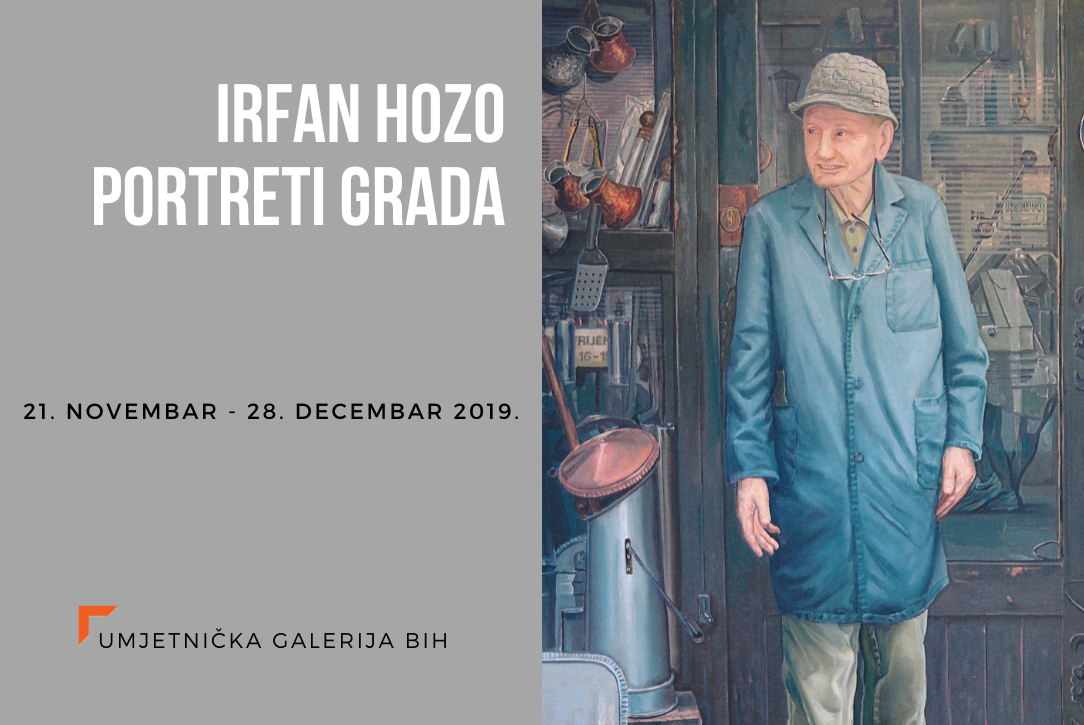
21/11/2019 – 28/12/2019
Painter Irfan Hozo marks forty years of his professional work in art with the exhibition Portraits of the City. Instead of the expected retrospective, the artist decided to embark on a new cycle, embrace a new challenge and set the level of his artistic creativity a few notches higher. The absence of a retrospective is not especially surprising since it is difficult to talk about this artist’s entire body of work. Namely, he does not have a predictable developmental path, so he is equally passionate about drawing and painting and graphic art. None of his new cycles originate from the previous ones; each new cycle begins a new story. The only thing that could be characterized as a constant is his continuous presence on the art scene, as well as Hozo’s lasting preoccupation with realistic portrayal.
This latest cycle brings a new but still recognizable Hozo. After a somewhat prolonged break, he appears before the audience with works in which his handwriting is both recognizable and new at the same time. The thing that marked Hozo’s career so far is his most impressive exhibition with motifs of the destroyed City Hall as a symbol of the city and its destruction. For his topic, Hozo still uses the same city, with a noticeable time lag but through a different prism. The same large format, recognizable cityscapes, familiar or at least recognizable faces remained. This exhibition is dedicated to the city and its people in a distinctive creative manner. Hozo does not accept the term celebrity; his characters are recognizable, yet down-to-earth, warm and cordial, without arrogance or self-importance. So is Hozo’s city, emerging discreetly but inevitably from the background is also like this, and so are his people. Although large formats, their size does not expose them, they remain caught in the moment or often even frozen at that moment, so they do not have the usual posing attitude that disappears immediately after clicking with the camera. Hozo’s people remain calm and, after painting, are left with their thoughts that simply do not pass. The artist does not set a goal to represent their greatness, but their humanity and closeness to the ordinary people. They are not famous people of this city, but people who make the city recognizable.
